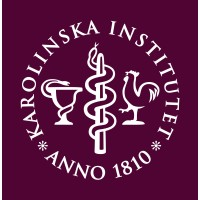The Future of Cancer Treatment: How AI and Circular RNA Are Changing the Game
January 14, 2025, 10:12 pm
In the world of medicine, change is the only constant. Two groundbreaking advancements are making waves: artificial intelligence (AI) in cancer prognosis and circular RNA (circRNA) therapeutics. Both are poised to redefine how we approach treatment and patient care.
Let’s start with AI. Imagine a powerful detective, sifting through mountains of evidence to find the truth. Researchers at Stanford University have developed an AI model named MUSK, which stands for Multimodal Unified Masked Transformer. This model is not just another tool; it’s a game-changer. It combines visual data—like microscopic images and CT scans—with textual information, such as clinical notes. This integration is crucial for understanding cancer, a disease that thrives on complexity.
MUSK was trained on a staggering 50 million medical images and over a billion text documents. The result? It outperformed traditional methods in predicting cancer outcomes. For instance, it accurately forecasted survival rates for various cancers in 75% of cases, compared to just 64% for standard methods. It’s like having a crystal ball that sees beyond the surface.
This model doesn’t just diagnose; it predicts. It identifies which lung cancer patients might benefit from immunotherapy, a treatment that harnesses the body’s immune system. In a world where decisions often hinge on a single biomarker, MUSK evaluates hundreds of data points. This holistic approach is akin to a conductor leading an orchestra, ensuring every instrument plays in harmony.
But the journey doesn’t end here. The challenge lies in the data. Training AI requires vast amounts of labeled information, which can be hard to come by. MUSK, however, thrives on unpaired multimodal data, broadening the scope of what it can learn. This flexibility allows it to adapt to specific clinical questions, making it a versatile ally for doctors.
Now, let’s pivot to circRNA. This innovative therapeutic approach is like a new brush in the hands of an artist. Circio, a biotechnology company, is at the forefront of this revolution. Their recent review in *Nature Reviews Genetics* highlights the potential of circRNA in treating various diseases, including cancer.
CircRNA offers unique advantages. Its stability surpasses that of traditional linear mRNA, making it a more reliable candidate for therapeutic applications. Imagine a sturdy bridge that withstands the test of time, compared to a fragile one that crumbles under pressure. This stability is crucial in the fast-paced world of medicine, where time is often of the essence.
The review outlines how circRNA can be utilized in gene therapy, CAR-T therapy, and even for infectious diseases. The possibilities are vast. CircRNA’s enhanced immunological profile means it can potentially elicit a stronger immune response, a vital factor in fighting diseases like cancer. It’s like having a secret weapon in a battle against a formidable foe.
Circio’s proprietary circVec technology is a key player in this arena. It allows for efficient production of multifunctional circRNA within cells. This technology has shown up to 15 times more durable protein expression compared to classic mRNA systems. In the race for effective treatments, circVec could become the gold standard.
As researchers delve deeper into circRNA, they are uncovering new therapeutic avenues. The review serves as a roadmap, guiding scientists through the landscape of circRNA technology. It highlights both the opportunities and challenges, ensuring that the path forward is clear.
In the grand tapestry of cancer treatment, AI and circRNA are two vibrant threads. They complement each other, weaving a narrative of hope and innovation. AI’s predictive power can enhance the effectiveness of circRNA therapies, creating a synergy that could revolutionize patient care.
The implications are profound. Imagine a future where treatment plans are tailored to individual patients, based on a comprehensive analysis of their unique data. This personalized approach could lead to better outcomes and fewer side effects. It’s a vision that’s no longer a distant dream but a tangible reality on the horizon.
However, challenges remain. The integration of AI into clinical practice requires careful consideration. Ethical concerns, data privacy, and the need for robust validation are all critical factors that must be addressed. Similarly, circRNA technology must overcome regulatory hurdles and ensure safety and efficacy in clinical trials.
As we stand at the crossroads of these advancements, one thing is clear: the future of cancer treatment is bright. AI and circRNA are not just buzzwords; they represent a paradigm shift in how we understand and combat this complex disease. With continued research and collaboration, we can unlock new possibilities and improve the lives of countless patients.
In conclusion, the intersection of AI and circRNA is a fertile ground for innovation. As these technologies evolve, they hold the promise of transforming cancer care. The journey is just beginning, but the destination is one of hope, healing, and a brighter future for all.
Let’s start with AI. Imagine a powerful detective, sifting through mountains of evidence to find the truth. Researchers at Stanford University have developed an AI model named MUSK, which stands for Multimodal Unified Masked Transformer. This model is not just another tool; it’s a game-changer. It combines visual data—like microscopic images and CT scans—with textual information, such as clinical notes. This integration is crucial for understanding cancer, a disease that thrives on complexity.
MUSK was trained on a staggering 50 million medical images and over a billion text documents. The result? It outperformed traditional methods in predicting cancer outcomes. For instance, it accurately forecasted survival rates for various cancers in 75% of cases, compared to just 64% for standard methods. It’s like having a crystal ball that sees beyond the surface.
This model doesn’t just diagnose; it predicts. It identifies which lung cancer patients might benefit from immunotherapy, a treatment that harnesses the body’s immune system. In a world where decisions often hinge on a single biomarker, MUSK evaluates hundreds of data points. This holistic approach is akin to a conductor leading an orchestra, ensuring every instrument plays in harmony.
But the journey doesn’t end here. The challenge lies in the data. Training AI requires vast amounts of labeled information, which can be hard to come by. MUSK, however, thrives on unpaired multimodal data, broadening the scope of what it can learn. This flexibility allows it to adapt to specific clinical questions, making it a versatile ally for doctors.
Now, let’s pivot to circRNA. This innovative therapeutic approach is like a new brush in the hands of an artist. Circio, a biotechnology company, is at the forefront of this revolution. Their recent review in *Nature Reviews Genetics* highlights the potential of circRNA in treating various diseases, including cancer.
CircRNA offers unique advantages. Its stability surpasses that of traditional linear mRNA, making it a more reliable candidate for therapeutic applications. Imagine a sturdy bridge that withstands the test of time, compared to a fragile one that crumbles under pressure. This stability is crucial in the fast-paced world of medicine, where time is often of the essence.
The review outlines how circRNA can be utilized in gene therapy, CAR-T therapy, and even for infectious diseases. The possibilities are vast. CircRNA’s enhanced immunological profile means it can potentially elicit a stronger immune response, a vital factor in fighting diseases like cancer. It’s like having a secret weapon in a battle against a formidable foe.
Circio’s proprietary circVec technology is a key player in this arena. It allows for efficient production of multifunctional circRNA within cells. This technology has shown up to 15 times more durable protein expression compared to classic mRNA systems. In the race for effective treatments, circVec could become the gold standard.
As researchers delve deeper into circRNA, they are uncovering new therapeutic avenues. The review serves as a roadmap, guiding scientists through the landscape of circRNA technology. It highlights both the opportunities and challenges, ensuring that the path forward is clear.
In the grand tapestry of cancer treatment, AI and circRNA are two vibrant threads. They complement each other, weaving a narrative of hope and innovation. AI’s predictive power can enhance the effectiveness of circRNA therapies, creating a synergy that could revolutionize patient care.
The implications are profound. Imagine a future where treatment plans are tailored to individual patients, based on a comprehensive analysis of their unique data. This personalized approach could lead to better outcomes and fewer side effects. It’s a vision that’s no longer a distant dream but a tangible reality on the horizon.
However, challenges remain. The integration of AI into clinical practice requires careful consideration. Ethical concerns, data privacy, and the need for robust validation are all critical factors that must be addressed. Similarly, circRNA technology must overcome regulatory hurdles and ensure safety and efficacy in clinical trials.
As we stand at the crossroads of these advancements, one thing is clear: the future of cancer treatment is bright. AI and circRNA are not just buzzwords; they represent a paradigm shift in how we understand and combat this complex disease. With continued research and collaboration, we can unlock new possibilities and improve the lives of countless patients.
In conclusion, the intersection of AI and circRNA is a fertile ground for innovation. As these technologies evolve, they hold the promise of transforming cancer care. The journey is just beginning, but the destination is one of hope, healing, and a brighter future for all.

